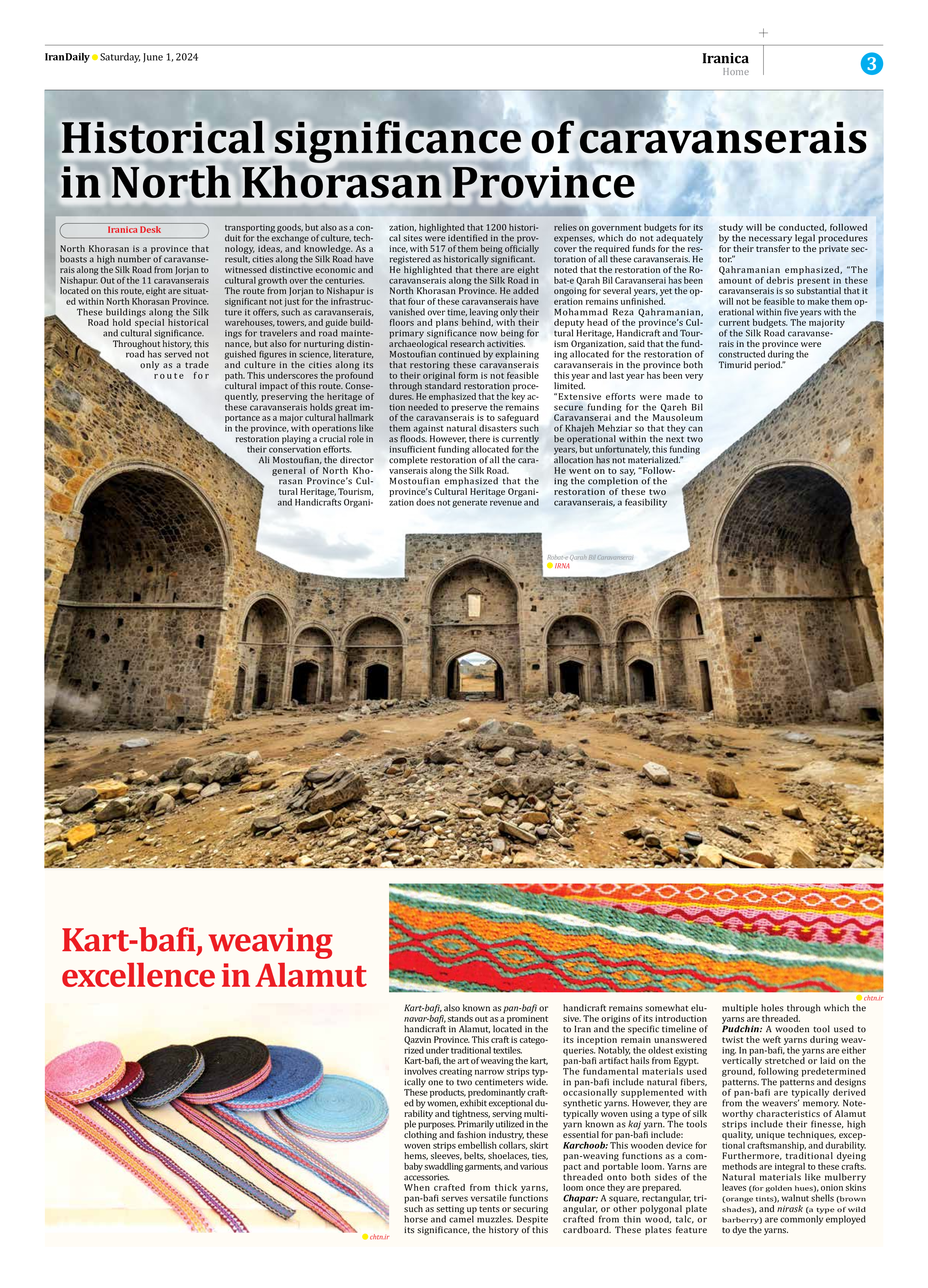
Copy in clipboard...
Kart-bafi, weaving excellence in Alamut
Kart-bafi, the art of weaving the kart, involves creating narrow strips typically one to two centimeters wide. These products, predominantly crafted by women, exhibit exceptional durability and tightness, serving multiple purposes. Primarily utilized in the clothing and fashion industry, these woven strips embellish collars, skirt hems, sleeves, belts, shoelaces, ties, baby swaddling garments, and various accessories.
When crafted from thick yarns, pan-bafi serves versatile functions such as setting up tents or securing horse and camel muzzles. Despite its significance, the history of this handicraft remains somewhat elusive. The origins of its introduction to Iran and the specific timeline of its inception remain unanswered queries. Notably, the oldest existing pan-bafi artifact hails from Egypt.
The fundamental materials used in pan-bafi include natural fibers, occasionally supplemented with synthetic yarns. However, they are typically woven using a type of silk yarn known as kaj yarn. The tools essential for pan-bafi include:
Karchoob: This wooden device for pan-weaving functions as a compact and portable loom. Yarns are threaded onto both sides of the loom once they are prepared.
Chapar: A square, rectangular, triangular, or other polygonal plate crafted from thin wood, talc, or cardboard. These plates feature multiple holes through which the yarns are threaded.
Pudchin: A wooden tool used to twist the weft yarns during weaving. In pan-bafi, the yarns are either vertically stretched or laid on the ground, following predetermined patterns. The patterns and designs of pan-bafi are typically derived from the weavers’ memory. Noteworthy characteristics of Alamut strips include their finesse, high quality, unique techniques, exceptional craftsmanship, and durability.
Furthermore, traditional dyeing methods are integral to these crafts. Natural materials like mulberry leaves (for golden hues), onion skins (orange tints), walnut shells (brown shades), and nirask (a type of wild barberry) are commonly employed to dye the yarns.







